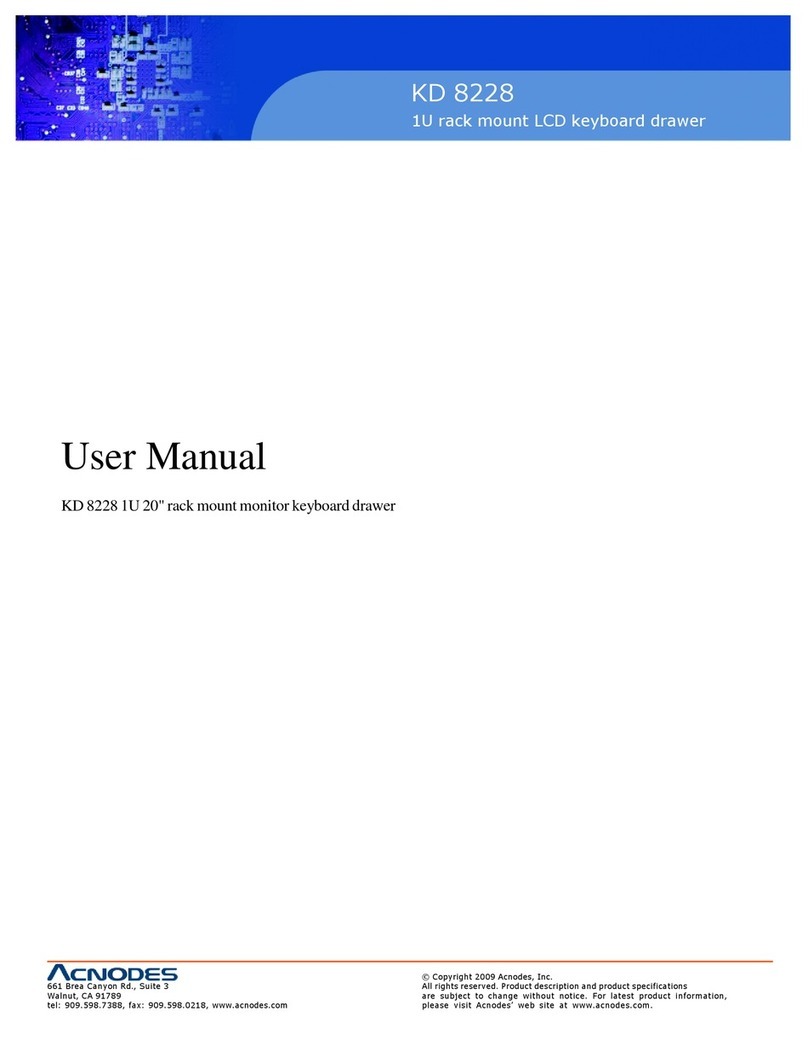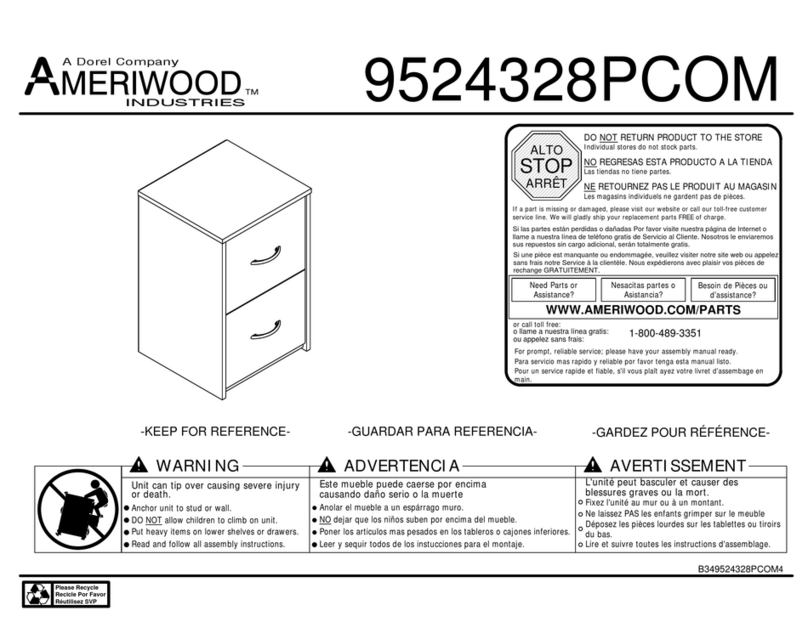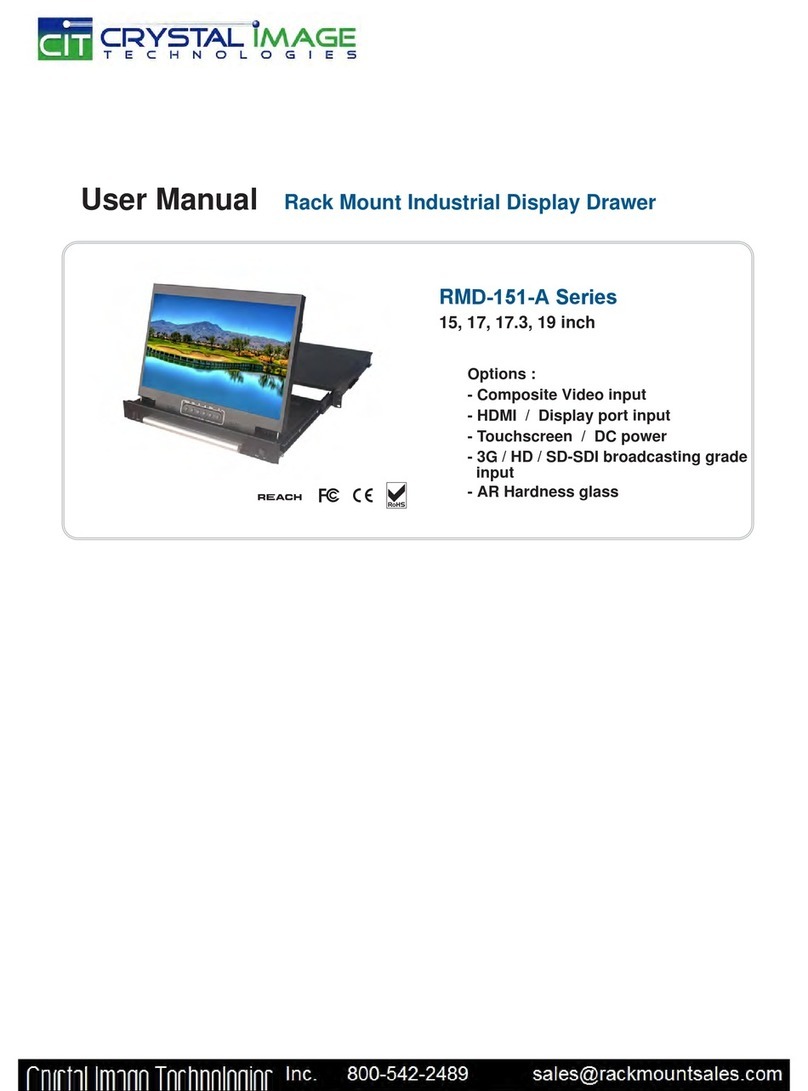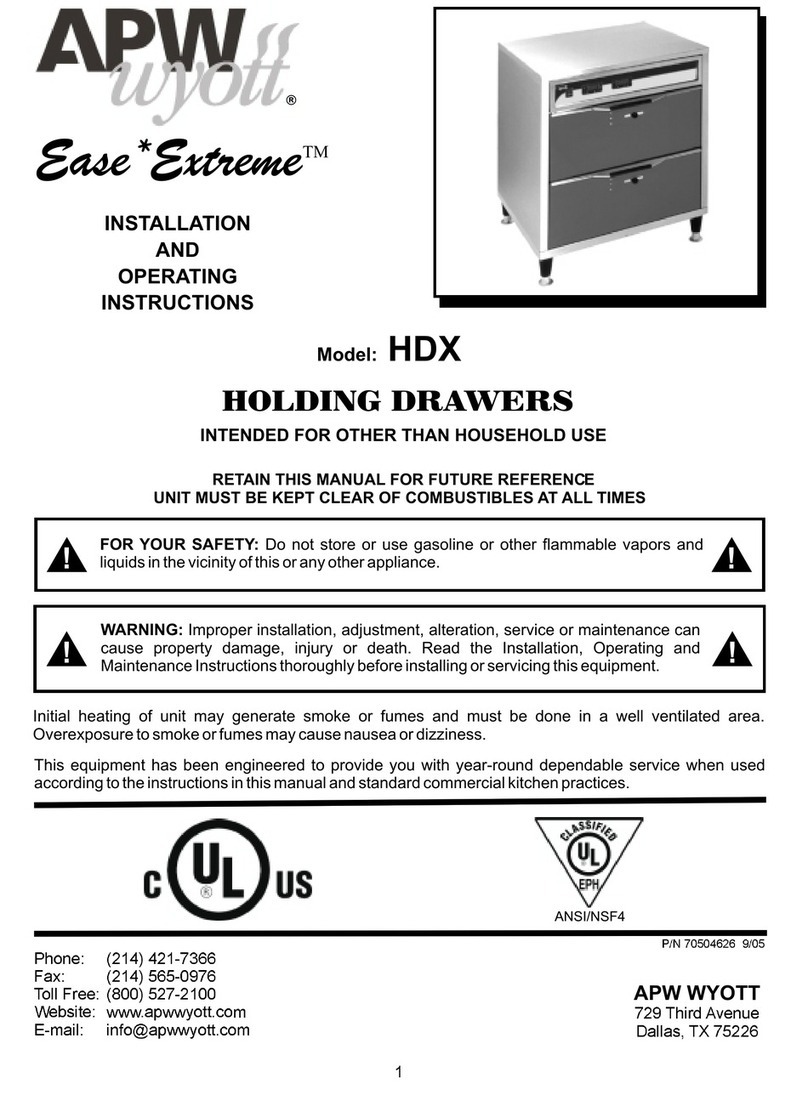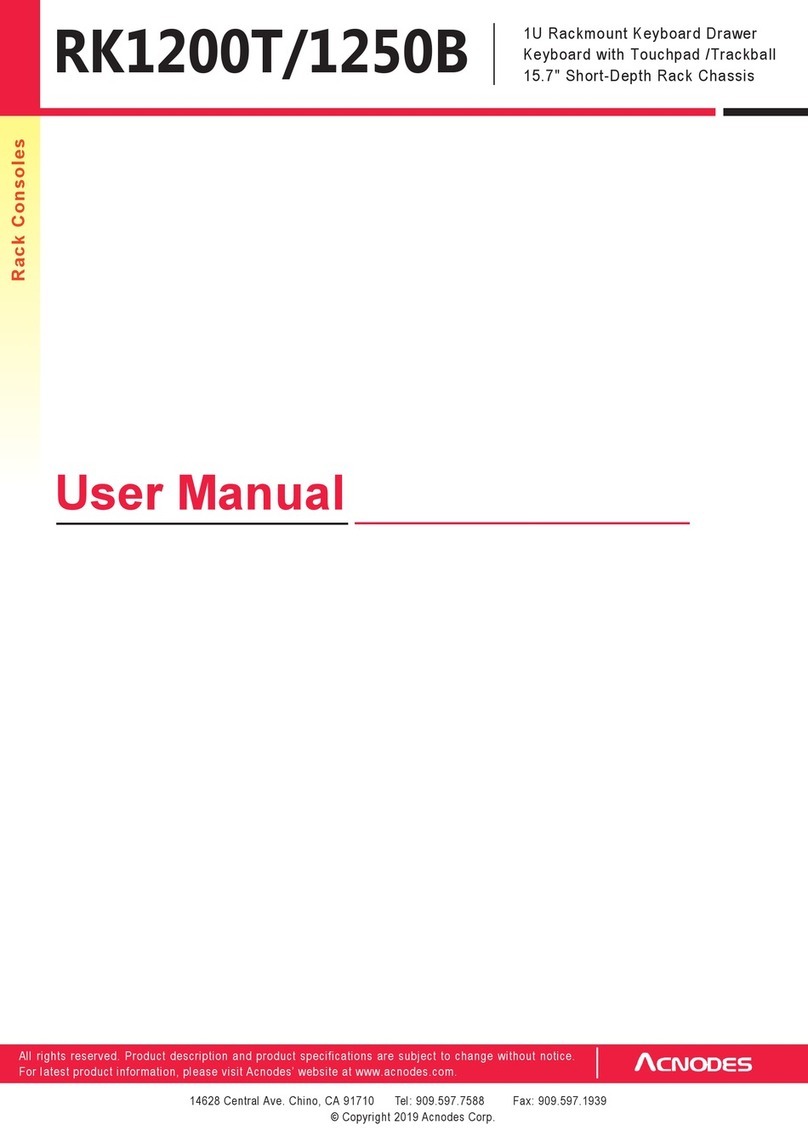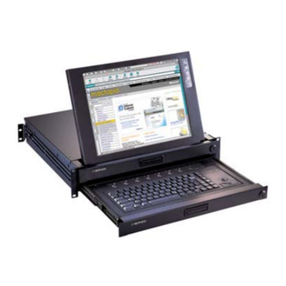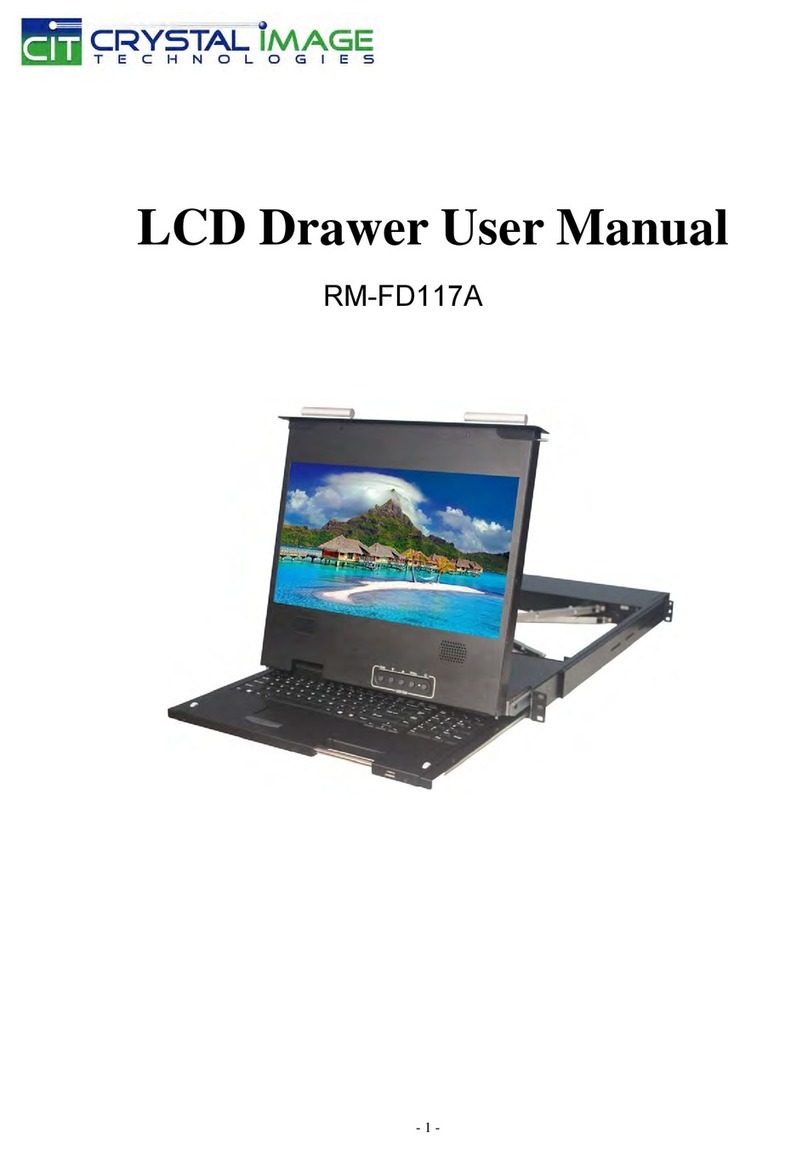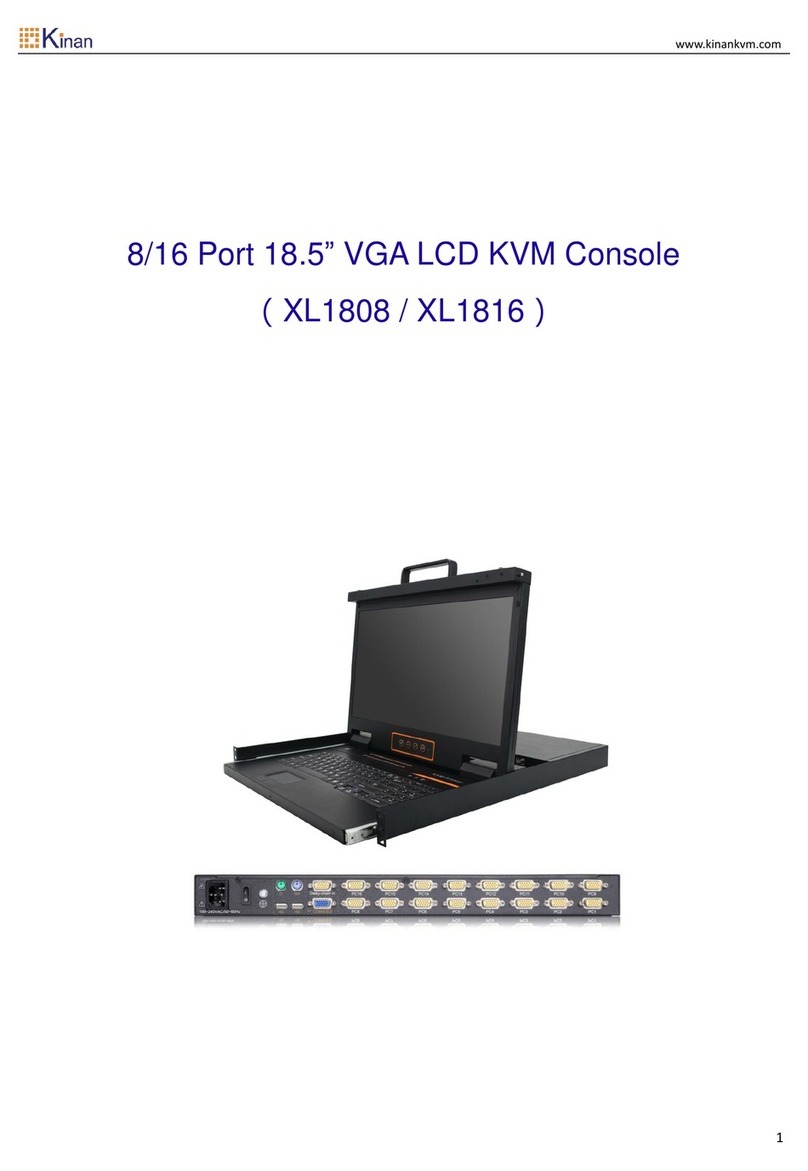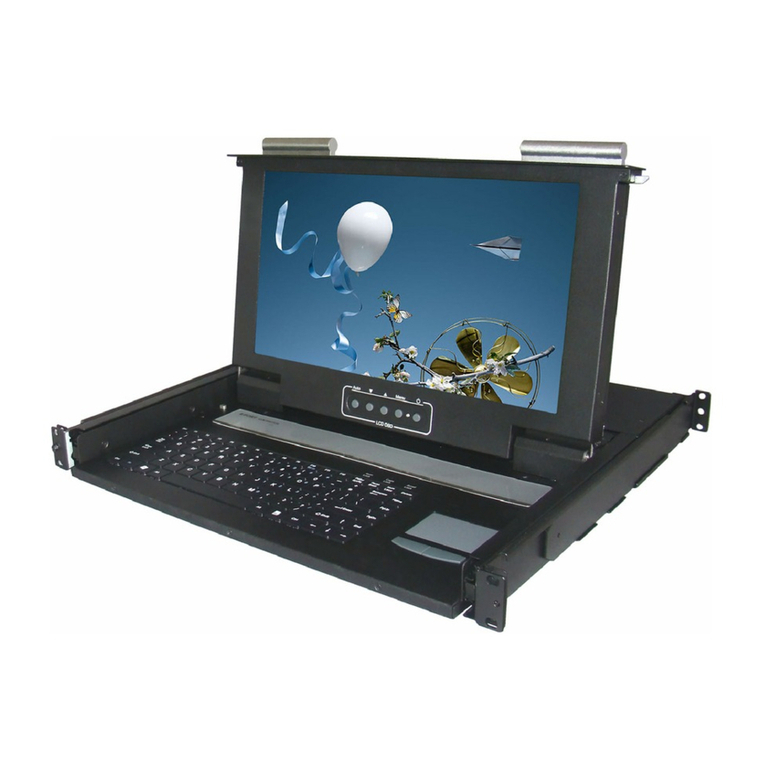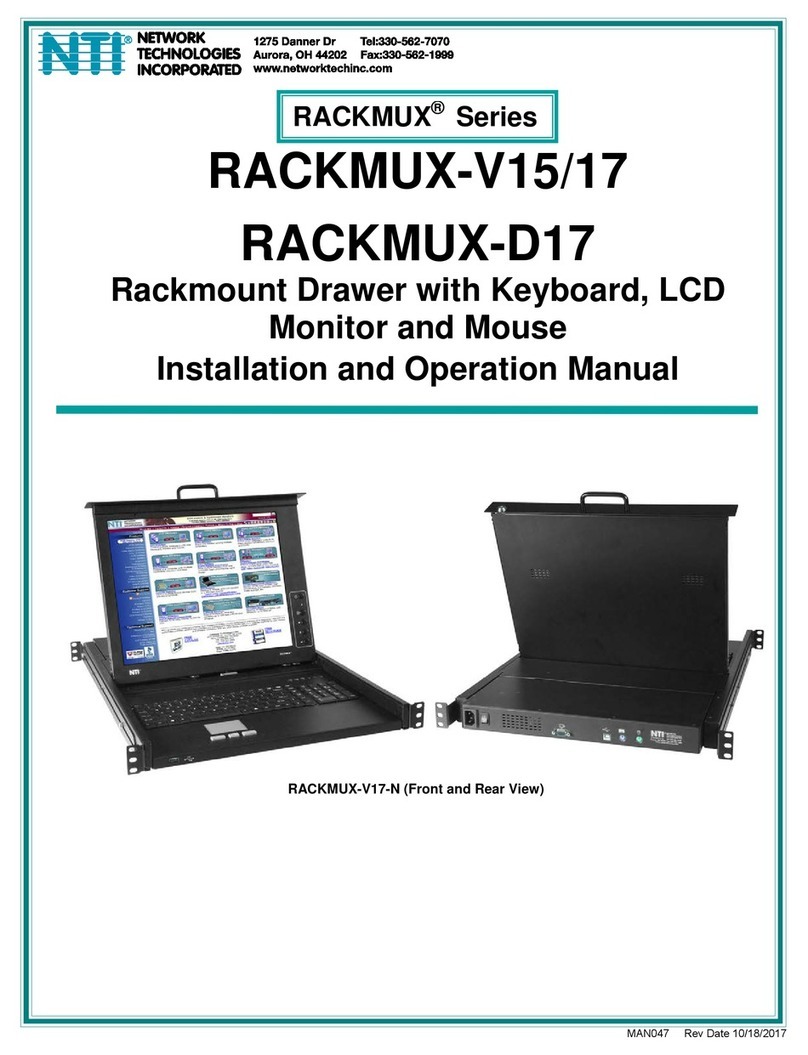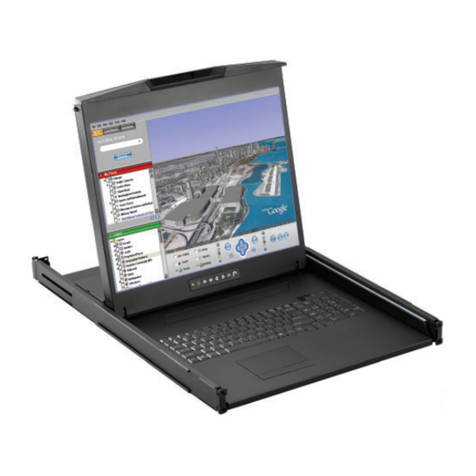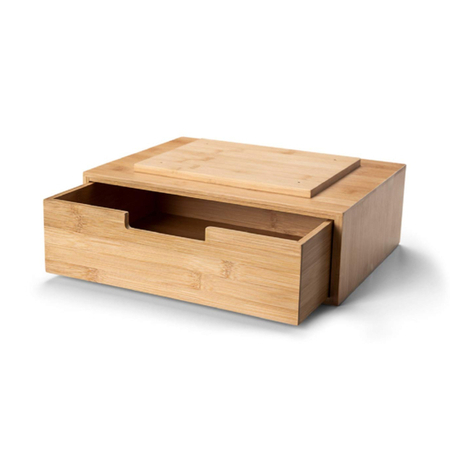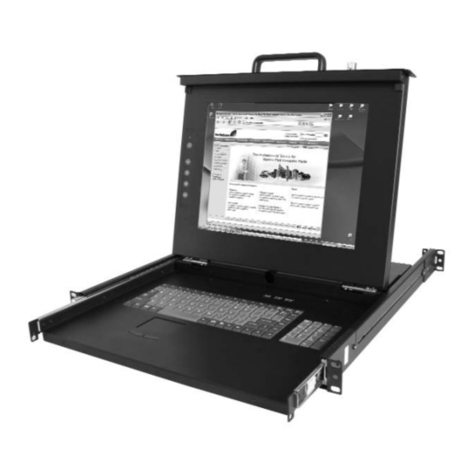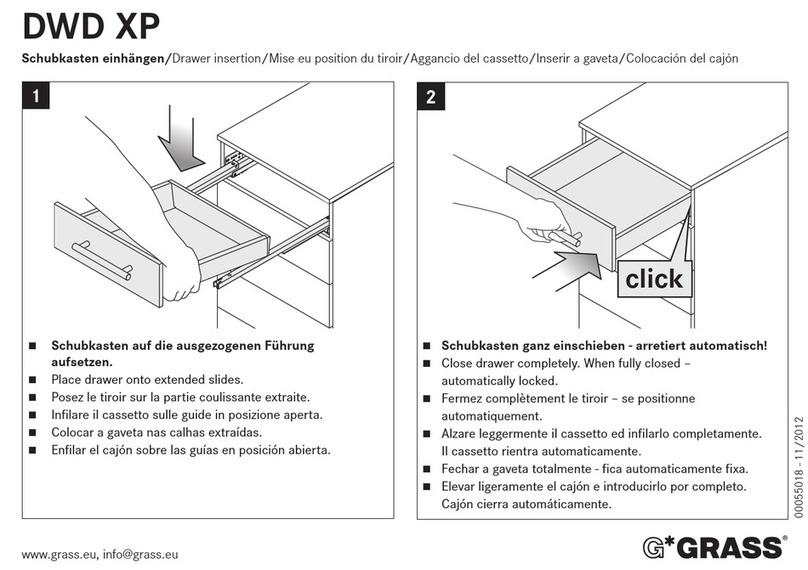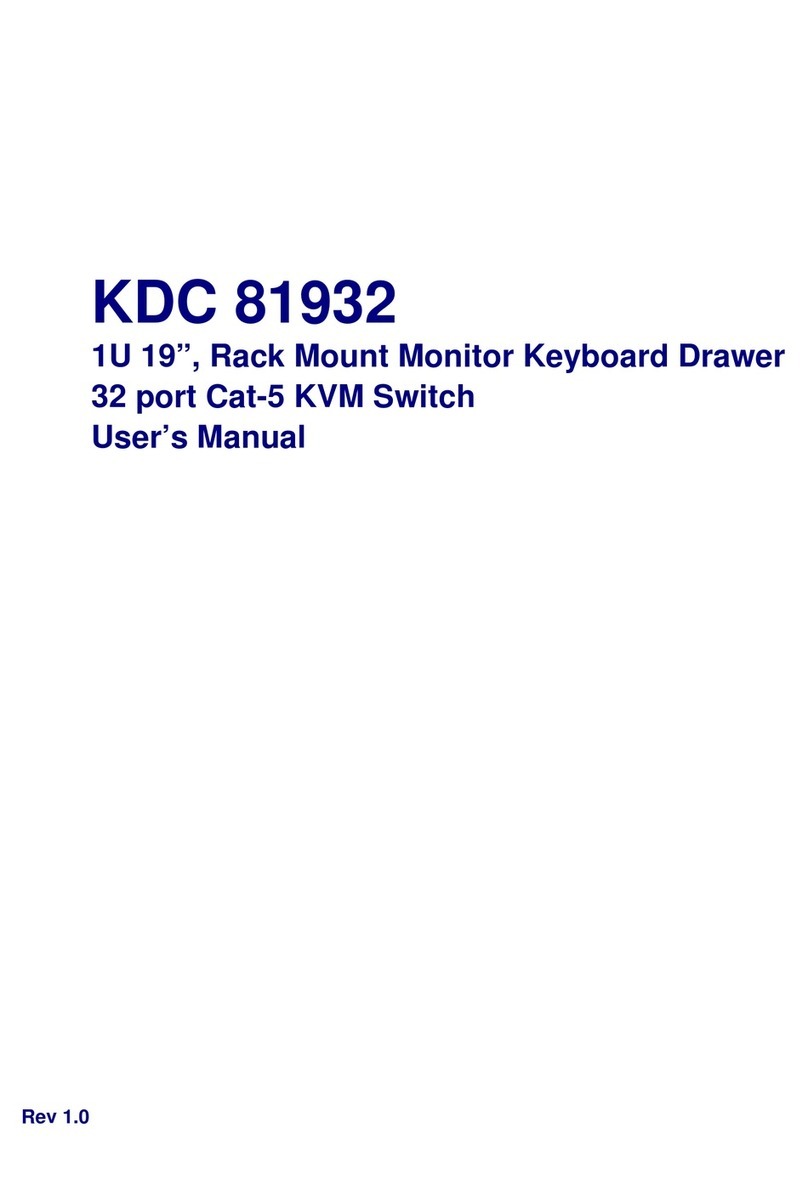
2.If the Offline Skip of the OSD System Setting is Auto ,then you cannot Make any switch when pressing an
offline Port Selection Switch .
3.For Auto Scan Mode , none of the Port Selection Switches functions .
lHot Key and Mouse Clicking
Hot key and mouse clicking are applicable for switching a small section .You can select the SVS (Smart View
Setting) from the OSD of the PC .first (for q quick switch of PC) and use the keyboard (press the Ctrl keytwice) or
the mouse (press and hold the middle button while pressing the left of right button) to switch to the previous or next
set of PC .
Note :The mouse must have at least 3 keys . As far as you select a PC with the SVS , you can use this method
for the switch .
lOSD (on Screen Display)
Press the NumLock on the keyboard twice or simultaneously press the Push Buttons 1 and 2 of the Port
Selection Switch on the KVM panel to Start the OSD . Use the UP, Down and Enter keys on the keyboard to switch
Or directly move the mouse to the target PC , and then double click the left botton.
Additionally , you also can use the numeric keys to enter the direct switch .For example , if you want to switch a
PC to the Slave KVM port 04 underThe Master KVM port 03 , then you can start the OSD and then directly enter
0304 . If you are using a standalone machine , then just enter the first two digits.
More OSD related information are given in the following OSD sections .
On Screen Display
lStart
Press the NumLock twice or the Port Selection Switches 1 and 2 on the panel to enter the OSD .
Note :
If you have modified the Hot Key for starting the OSD and are unable to enter the OSD by pressing NumLock ,
then you can start the OSD by using the Port Selection Switch first , and then press F9 to enter into the System
Setting to modify the options of the OSD Entry Hot Key .
nOperation
You can operate the options by keyboard or mouse , For the keyboard operation , besides the common Up and
Down keys , there are special Function keys such as Enter , Space Bar , Function Key (F1,F4…) under the OSD
remark field . For the mouse operation , the left key refers to Enter and the right key refers to Exit . For example ,
move the mouse point to your desired PC , and click the left key . The selection bar will move to that position and
then click the left key again for the execution .
Note :
You must use the keyboard to complete the two functions : Name Edit and Password

